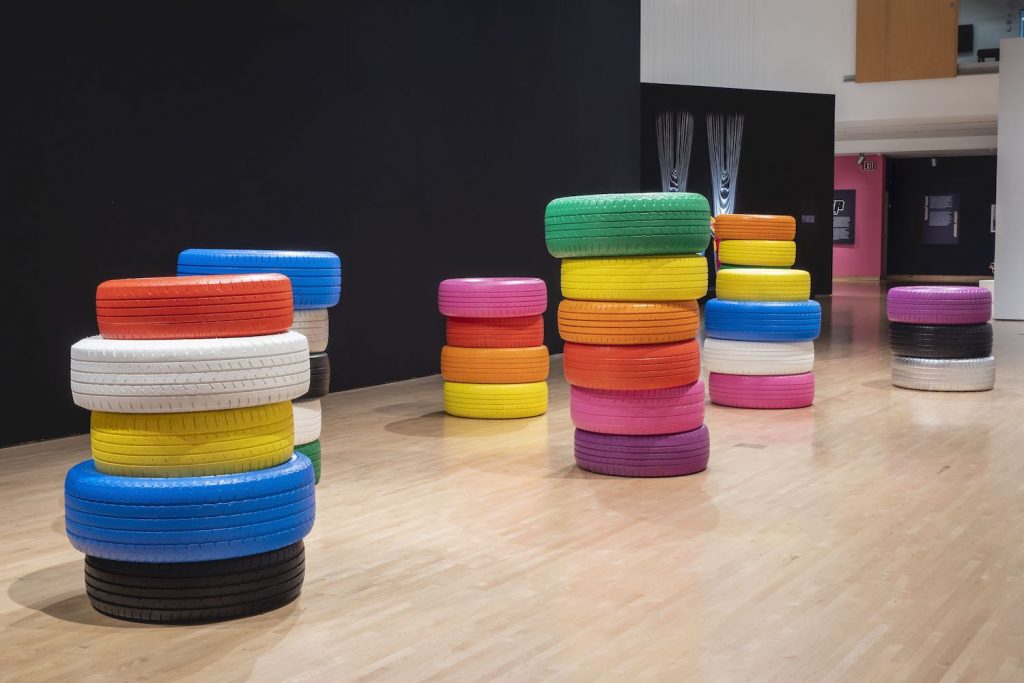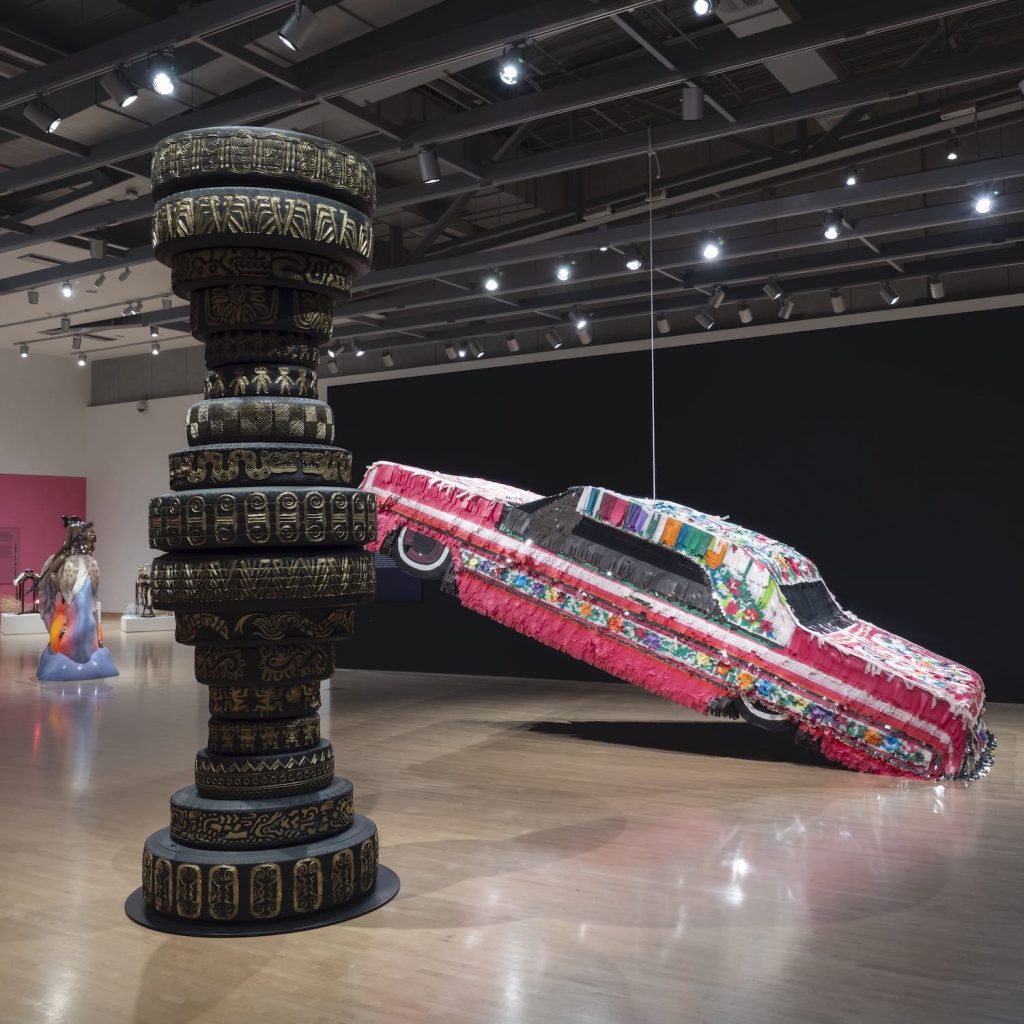Phoenix Art Museum will premiere a new exhibition on April 24, 2022 that explores the relationships between transportation, landscape, and identity in our desert region. Desert Rider highlights a diverse display of large-scale installations, prints, sculptures, and more by Latinx and Indigenous artists including Cara Romero, Douglas Miles, Margarita Cabrera, Liz Cohen, and Justin Favela, each of whom draw inspiration from custom-car and lowrider culture of the Southwest.
Organized by Phoenix Art Museum and curated by Gilbert Vicario, curator of contemporary art, Desert Rider will feature the world premiere of multiple works commissioned specifically for the exhibition.
“We are excited to share the premiere of Desert Rider with our community,” said Mark Koenig, the interim Sybil Harrington Director and CEO of Phoenix Art Museum. “This exhibition amplifies voices that challenge preconceived notions around identify and the creative self. Desert Rider gives Arizona audiences the opportunity to see how Indigenous and Latinx perspectives and interpretations of automotive and skateboarding subcultures define the regional identity of the Southwest. We are thrilled to present diverse works, many by artists working here in Arizona.”
Desert Rider explores the genesis of custom-car and lowrider culture, rooted in the post-war culture of the 1950s, which mythologized our dependence on and fascination with the automobile. The exhibition connects contemporary art with the counter-culture developments of the 1960s epitomized in the lowrider phenomenon that occurred simultaneously with other forms of civil protest.
Images of customized vehicles roaring through the wide-open landscapes of the American southwest captured notions of freedom, liberty, rebellion, and nonconformity. Cars became statements of defiance, cruising mere inches above the pavement. Mexican-American artisans adorned their cars with cultural and religious imagery, including Nahua and Mayan symbols painted on the hoods of their vibrantly colored vehicles, a rejection of the mainstream automotive aesthetic. Today, for many in the Latinx and Chicanx communities, the lowrider remains a symbol of individuality, cultural identity, resistance and pride.
For Justin Favela, an artist known for his large-scale installations and sculptures that explore pop culture and themes of authenticity and place, lowrider culture also reflects the efforts of Mexican-American youth to take hold of the American Dream in their own ways. Visitors will experience one of Favela’s own works created specifically for Desert Rider: a lowrider made to scale and crafted from cardboard, tissue paper, and other materials.
He will also install his work Seven Magic Tires, a satirized take on Swiss-born artist Ugo Rondinone’s Seven Magic Mountains, located outside Las Vegas. Favela’s installation features a stack of brightly painted tires, arranged in varying heights, inspired by painted tires he once saw outside of a Vegas car shop.

Another featured artist, Jose Villalobos, evokes memories of his family and personal history through the newly commissioned work he’s created for Desert Rider in which he will “flamboyantly embellish” saddles using techniques and accessories typically reserved for lowriders, including chain steering wheels, and brightly colored lacquers, deconstructing the masculinity inherent in such objects.
Beyond the design and craftsmanship inherent in lowrider culture, the exhibition also explores the influence of movement, motion, and the ubiquity of car culture and its appearance in contemporary art. Featured works use symbols of transportation and movement to interrogate concepts of masculinity and femininity by Liz Cohen, Sam Fresquez, and Carlotta Boettcher and notions of migration and mobility by Betsabeé Romero, as well as works by Cara Romero and Laurie Steelink that explore how self-described ‘Indian-ness’ negotiates traditional Indigenous values with contemporary life.
“Desert Rider explores the ways car culture in the southwest, has influenced the work of contemporary Latinx and Indigenous artists who are examining the intersection of movement and motion, migration, gender, sexuality, labor and identity,” said Gilbert Vicario, who curated the exhibition. “It’s important to acknowledge all of the artists represented who are members of communities that were forced to the margins of our geographic space, experiences that parallel the history of the lowrider itself. I hope guests see the impact that local culture has had on artists working in the Southwest and appreciate this piece of history from the land in which they were born.”
As a complement to the exhibition, Museum librarian Jesse Alexander Lopez will curate a new installation drawn from the Museum’s library archives along with new acquisitions. Featuring books, magazines, and other ephemera, the satellite library installation will examine the links between Chicanx lowrider culture to its Mexican and ancient Latin American roots, and the philosophy of the mestizaje worldview. This complementary installation will be on view both in the south extension of Steele Gallery and the Museum’s Ballinger Interactive Gallery, colloquially known as the BIG Little Library, and will highlight iconic lowrider publications from the 1970s to today, books on the culture of the Aztecs and the aftermath of conquest, prison love letters and handmade cards, and a special look at the popularity of lowrider culture in Japan.
About the Exhibition
Desert Rider will be on view from April 24, 2022 through September 18, 2022 in Steele Gallery at Phoenix Art Museum. The exhibition is organized by Phoenix Art Museum. It is made possible through the generosity of the Arizona Office of Tourism and Men’s Arts Council, with additional support from the Museum’s Circles of Support and Museum Members. For details on the exhibition, visit phxart.org/exhibition/desert-rider/













More Stories
Monterey Auction Catalogs are Live
Watch: Gooding & Company Presents 1937 Bugatti Type 57SC Atalante at Pebble Beach
Broad Arrow Auctions Presents Highlights of the Monterey Jet Center Auction